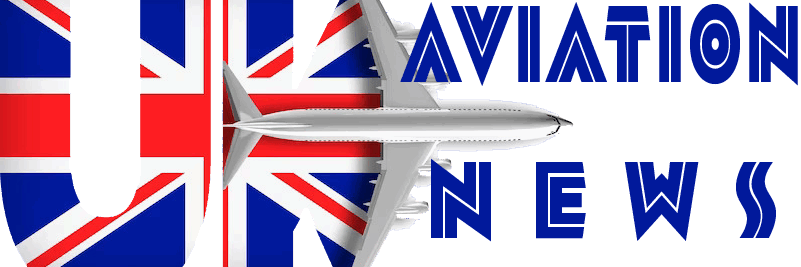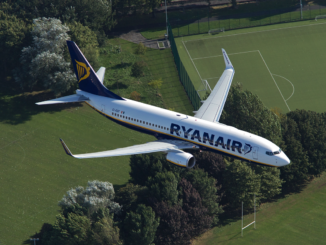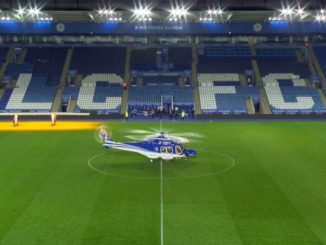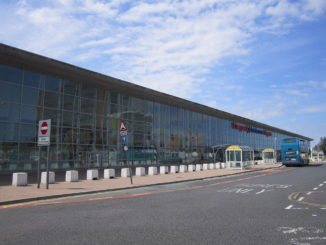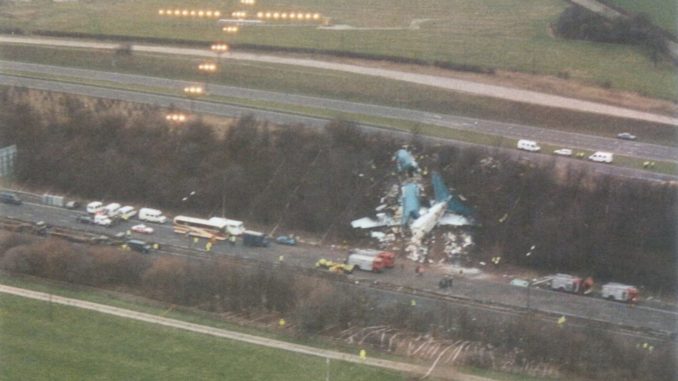
The 8th January 1989 was a Sunday, a day of rest for a country still coming to terms with the disaster at Lockerbie, Scotland where, just 18 days earlier, a Pan Am Boeing 747 was blown out of the sky by a terrorist bomb killing 270 people. But at 8:24pm, disaster stuck again.
British Midland flight BD92, an almost brand new Boeing 737-400, took off from London Heathrow Airport at 7:52pm bound for Belfast International Airport.
As the aircraft climbed to its cruise altitude the aircraft suddenly started to vibrate and make what was described as a “pounding” noise accompanied by smoke in the cabin. The crew carried out the procedure for an engine failure and in that process the captain, Captain Kevin Hunt asked his first officer which engine was malfunctioning, this was where the confusion began.
Responding to his captain, First Officer David McClelland replied: “It’s the left…. It’s the right one”. The throttled back the right hand engine and shut it down. Almost immediately the smell of smoke and vibration dissipated.
The crew prepared to divert the aircraft to East Midlands Airport and started its descent and approach to the airport.
As the aircraft was descending to the airfield, the left engine, the only one left running, was running at a much reduced rate but during the final approach, power was required from the engine as the descent became shallower and the aircraft was trimmed and prepared for landing. As more fuel was pumped into the left engine to maintain speed it ceased operating entirely and burst into flames.
The crew immediately attempt to restart the right engine, the one they thought had failed in-flight, but the aircraft had already slowed to just 115mph. At 8:24pm G-OBME’s tail impacted the ground just east of the M1 next to the village of Kegworth. The aircraft carried on across the motorway finally coming to rest of the western embankment of the M1, just 519 yards short of the runway.
The aircraft broke into three main pieces on impact and 47 people were killed. All 8 crew and 71 passengers survived the accident.
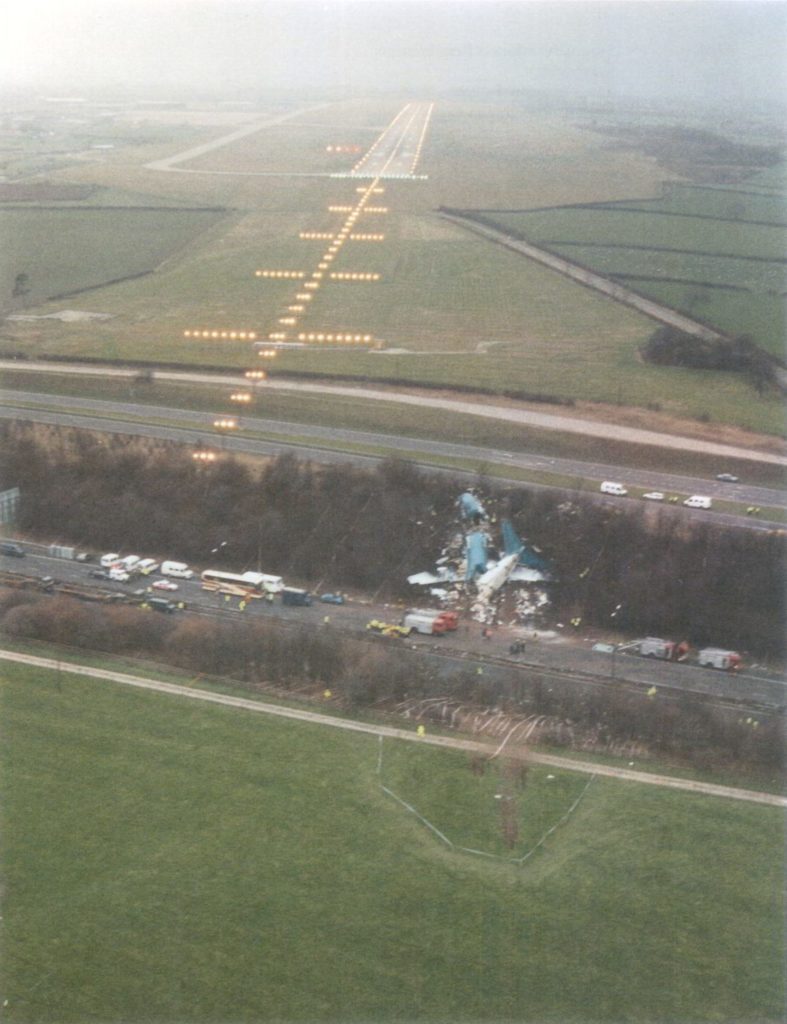
In the subsequent investigation by the Air Accidents Investigations Branch (AAIB) it was concluded that the crew believed the right hand engine had failed based on their knowledge of previous versions of the Boeing 737.
In previous versions of the 737, the left air conditioning pack, which was fed with compressor bleed air from the left engine, supplied air to the flight deck, the right engine supplied air to the cabin. On the newer -400 variant, the left pack feeds the flight deck but also feeds the aft cabin zone, while the right feeds the forward cabin.
The crew had extensively flown the older version of the aircraft and did not realise that the bleed air system on the -400 aircraft was different.
As
This was backed up by the smoke and vibration stopping when the right hand engine was shut down, although this later turned out to be a coincidence of the auto throttle system being shut down and a reduction of fuel to the left, malfunctioning engine.
Opportunities were missed
The cause of the engine failure was a fan blade separation but the AAIB concluded that the cause of the crash was crew confusion, and the resulting shutting down of the wrong engine. In summary the AAIB said “The cause of the accident was the operating crew shut down the No2 engine (right hand) after a fan blade fractured in the No1 engine (left hand). This engine subsequently suffered a major thrust loss due to secondary fan damage after power had been increased during the final approach to land”
The AAIB made a number of recommendations including that the CAA should review the current attitude towards engine vibration indicators on the instrument panel as well as highlighting the differences between variants of the same aircraft. Including familiarisation of the newer instruments and systems in Flight Simulators.
As this was a survivable accident, the AAIB also made a number of recommendations regarding the seats of the aircraft. This included that the CAA should research toughening floors and seat designs as well as accelerating research into specific child seats.
Much of that research has gone into modern aircraft seats which now meet higher specifications for their behaviour during an impact helping to make air travel a much safer experience, and accidents, more survivable.
Captain Hunt and First Officer McClelland, who were both seriously injured in the crash, were later dismissed by the airline following the criticisms of their actions in the accident report. In a documentary for the BBC Kevin Hunt said “We were the easy option—the cheap option if you wish. We made a mistake—we both made mistakes—but the question we would like answered is why we made those mistakes.”
British Midland later paid McClelland an undisclosed sum in an out of court settlement for unfair dismissal.
A memorial stands today on the site of the 1989 crash in memory of the 47 people who lost their lives.
In Memorium
- Helen Claire Barker
- Jean Burrows
- Rodney Robert Burrows
- John Thomas Campbell
- Karin Jacqueline Campbell
- John Joseph (Sean) Campbell
- Ann Elizabeth Chilvers
- Brian Leslie Chilvers
- Thomas Barry Copestake
- John Coward
- Marja Helena Desmond
- Sarah Evelyn Dougherty
- Alec Norman Dowling
- Bernard Joseph Ferguson
- Brian Ferguson
- David Gerard Glackin
- Matilda Taggart Gordon
- Walter Gordon
- David Hastings
- Timothy John Hicks
- Peter Charles Anthony Hynds
- Patricia Anne Irwin
- Daniel James Johnson
- Jean Johnson
- John Francis Martin Johnson
- Bryan Wooleston Langlands
- Frances Angelina Leonard
- Ruth Elizabeth McCallion
- Gwynneth McConville
- Kathleen Ita McKenna
- Nicola Luciano Mideo
- Darren James Mitchell
- Denis Moloney
- Pearl Moloney
- David Paul Mulholland
- Anna Rose O’Donnell
- Judith Ann Pattison
- Richard Ramsaroop
- Kathleen Teresa Sheila Ryan
- Sean Luke Salters
- Ann Marie Snee
- Luka Berta Rita Stocker
- Michael David Thompson
- Koon Wong Tong
- Jonathan Edwin Turner
- Robert Wilson
- Sarah Jane Wright
